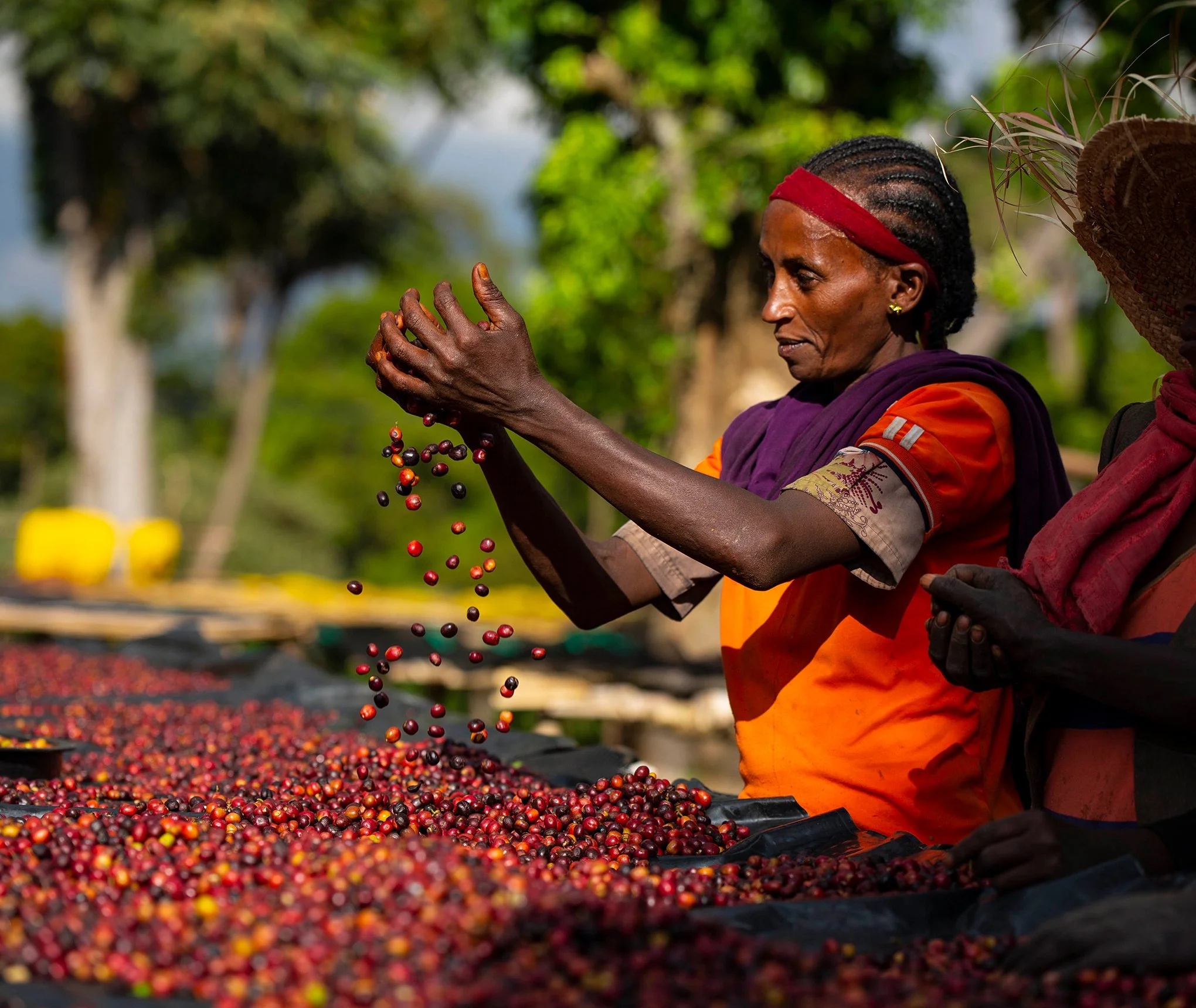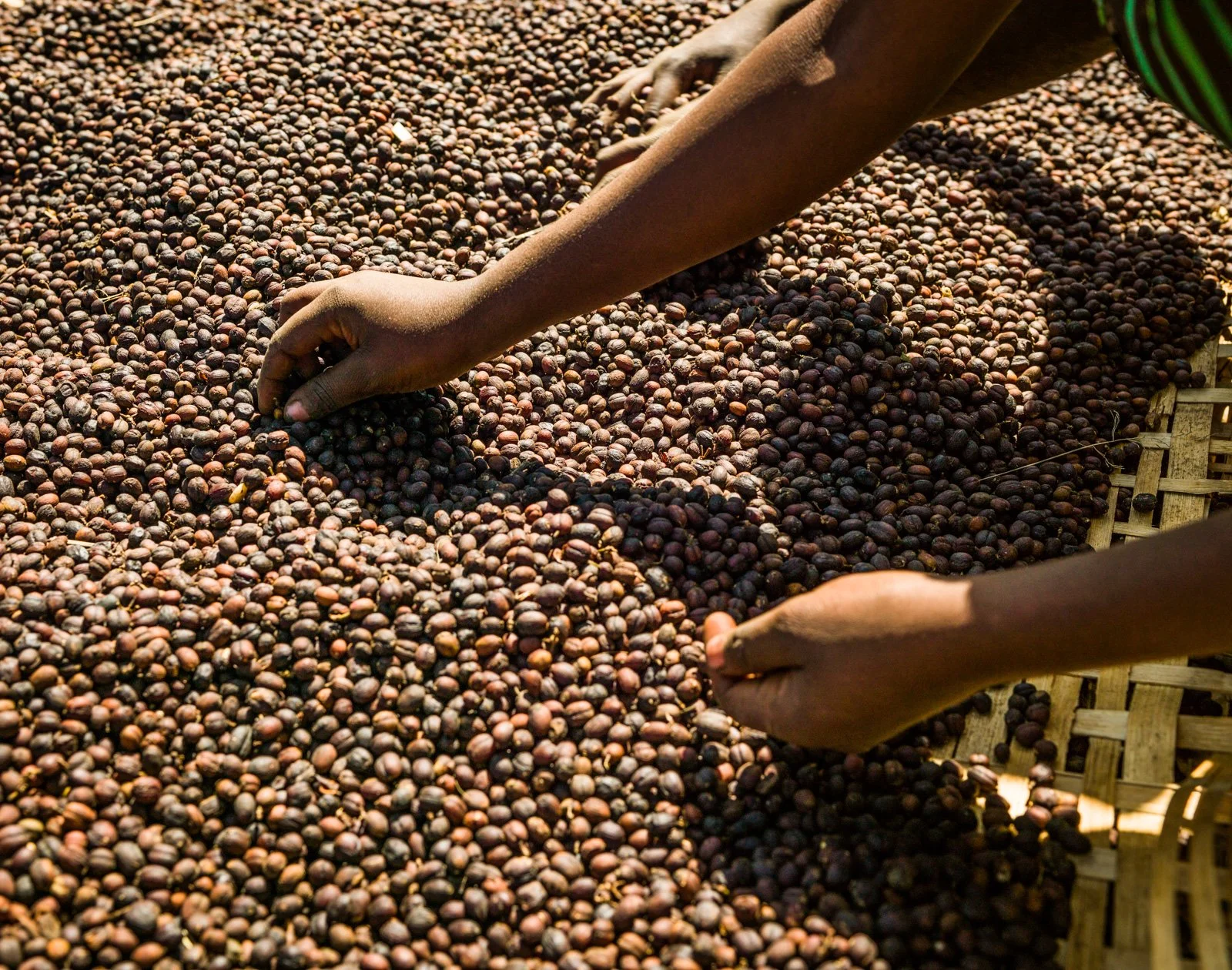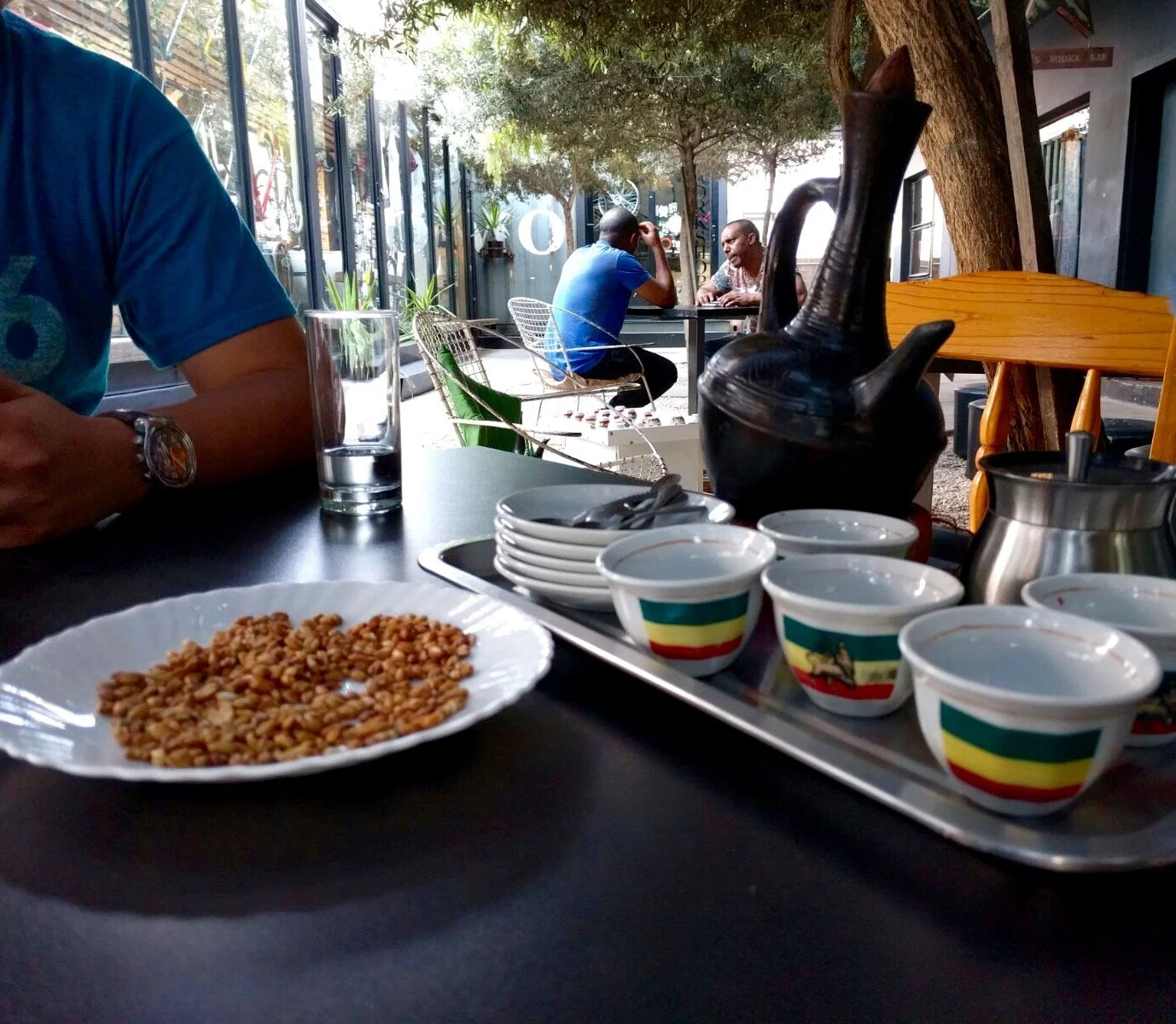The Ethiopian Coffee Ceremony: Where Time, Talk, and Aroma Blend
By: Chimdindu Ken-Anaukwu
If you ever find yourself in an Amharic-speaking home and smell freshly roasted coffee, cancel your plans. You’re about to enter a sacred space.
In Ethiopia, coffee isn’t just a drink. It’s life, language, and love served hot. The Amharic word for coffee is bunna (ቡና), and it’s more than a beverage; it’s an invitation to slow down and connect.
Forget “grab and go.” In Amharic culture, coffee says, “sit and stay.” It’s not about caffeine, it’s about communion.
Let’s follow bunna’s journey from the highlands where it’s born, through roasting and brewing, all the way to the steaming cup that brings people together.
1. The Birthplace of Coffee
Ethiopia isn’t just known for coffee; it is coffee’s homeland.
According to legend, a goat herder named Kaldi noticed his goats dancing after eating bright red cherries from a certain bush. Curious, he tried them too. The rest, as they say, is bunna history.
From that humble beginning in the ancient Kaffa region, Ethiopia became the soul of the coffee world. To this day, every sip of authentic Ethiopian coffee carries that wild, mountain-born energy.
2. How Ethiopian Coffee Is Farmed and Processed
Before bunna reaches your cup, it lives a full, beautiful life.
Growing the Bean
Ethiopian coffee grows naturally under forest shade, without chemical fertilizers. Farmers in regions like Sidama, Yirgacheffe, and Harrar tend to small plots of land where coffee trees thrive in high-altitude soil.
These aren’t massive plantations; they’re family farms, often passed down through generations. Every bean you drink has a story of patience and pride.
Harvesting
Coffee cherries are handpicked; only the ripe, red ones make the cut. It’s a careful process, often accompanied by singing or chatting. In many Amharic-speaking regions, the harvest season feels like a festival.
Processing the Coffee
After picking, farmers use two main methods:
Washed (Wet) Process: The pulp is removed with water, and the beans are dried for several days under the sun. This method gives a bright, clean flavor.
Natural (Dry) Process: The cherries are dried whole, giving a fruity, heavier taste.
Then comes hulling (removing the husk), sorting, and grading. By the time it leaves Ethiopia, that little bean has seen sun, sweat, and skill.
So when you sip your latte, remember somewhere, a farmer in Sidama smiled when they saw the color of that cherry.
3. Preparing for the Coffee Ceremony
Now that we’ve followed the bean’s journey, let’s step into an Ethiopian home where the bunna ceremony begins.
It starts with a woman (traditionally the host) spreading fresh grass or flowers on the floor, a symbol of purity and welcome. The coffee set, called jebena (ጅበና), takes center stage.
Incense fills the air. The sound of conversation grows. It’s not quiet and stiff like a tea party. It’s lively, full of jokes, laughter, and storytelling.
Everyone sits, ready for the aroma that soon follows.
4. The Roasting Ritual
The raw green beans are poured into a flat pan and roasted over charcoal. Slowly, the beans turn from pale green to deep brown. The smell is heavenly: bold, earthy, and ancient.
As they roast, the host shakes the pan rhythmically to ensure an even roast. When the beans are ready, she passes them around so everyone can inhale the fragrance.
You’re not allowed to just sit still. You lean in, close your eyes, and say, “Betam tiru new!” (በጣም ጥሩ ነው — It smells amazing!)
Because yes, it really does.
5. Brewing Bunna with Heart
Once roasted, the beans are ground; traditionally with a mortar and pestle. The rhythmic pounding becomes part of the music of the ceremony.
The grounds are then poured into the jebena, a round clay pot with a long spout. Water is added, and the pot sits over charcoal until it boils gently.
When it’s ready, the host pours the coffee in one graceful motion from a height, filling tiny cups called sini without spilling a drop. That’s skill. That’s art.
Sugar is optional, but conversation is not.
6. The Three Rounds of Connection
Ethiopian coffee isn’t a one-cup affair. It comes in three rounds, each with its own name and meaning:
Abol: the first and strongest cup.
Tona: the second, smoother one.
Bereka: the third, a blessing cup symbolizing peace and unity.
Refusing a round is like walking out halfway through a good story. You stay, you sip, you smile.
The conversation flows as freely as the coffee about family, politics, gossip, faith, and laughter. Every round brings people closer.
7. Cultural Meaning of Coffee in Amharic Society
In Amharic-speaking communities, bunna is social glue. It’s how neighbors bond, families reconnect, and strangers become friends.
If someone invites you to a coffee ceremony, it’s not casual; it’s hospitality in its purest form.
It means, “I trust you. Sit with me. Let’s share time.”
Even conflict has been resolved over bunna. Arguments mellow by the second round. By the third, peace is served.
That’s the magic of Ethiopian coffee; it heals what words can’t.
8. FAQs
1. How long does a typical coffee ceremony last?
Usually between one and two hours. It’s meant to slow time, not save it.
2. Do Ethiopians drink coffee every day?
Yes, often multiple times a day. It’s part of life, not a luxury.
3. Can men perform the coffee ceremony?
Traditionally women host it, but modern families sometimes share the role.
4. What snacks are served with bunna?
Popcorn (fendisha), roasted barley (kolo), or homemade bread.
5. What does “Bereka” mean in the ceremony?
It means “blessing.” The final round symbolizes gratitude and goodwill.
Final Thoughts
Coffee in Amharic culture isn’t about staying awake; it’s about staying connected.
From the farmer’s field in Kaffa to the jebena bubbling in a small Addis kitchen, every step is filled with care and community.
So the next time you sip Ethiopian coffee, remember: it traveled from soil to soul, carrying centuries of culture with it.
And if someone invites you to a coffee ceremony, don’t just drink. Listen. Laugh. Stay for Bereka. ☕💛








